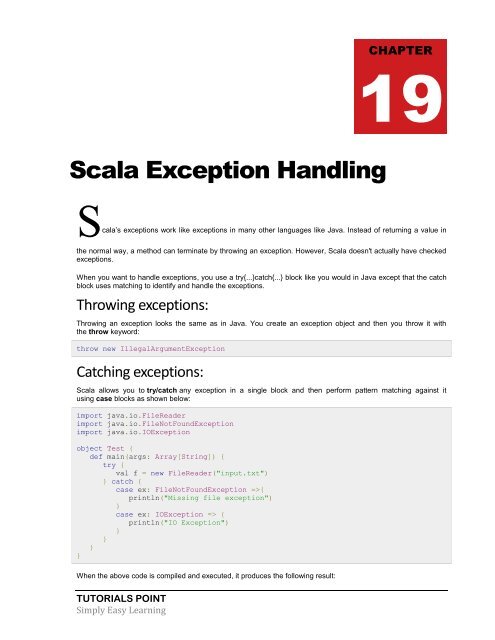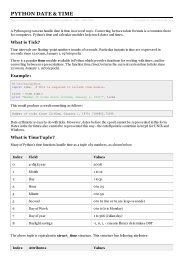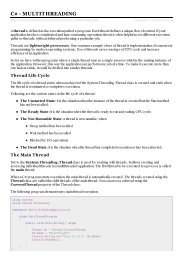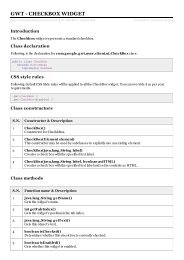Download Scala Tutorial (PDF Version) - Tutorials Point
Download Scala Tutorial (PDF Version) - Tutorials Point
Download Scala Tutorial (PDF Version) - Tutorials Point
You also want an ePaper? Increase the reach of your titles
YUMPU automatically turns print PDFs into web optimized ePapers that Google loves.
CHAPTER<br />
19<br />
<strong>Scala</strong> Exception Handling<br />
<strong>Scala</strong>’s exceptions work like exceptions in many other languages like Java. Instead of returning a value in<br />
the normal way, a method can terminate by throwing an exception. However, <strong>Scala</strong> doesn't actually have checked<br />
exceptions.<br />
When you want to handle exceptions, you use a try{...}catch{...} block like you would in Java except that the catch<br />
block uses matching to identify and handle the exceptions.<br />
Throwing exceptions:<br />
Throwing an exception looks the same as in Java. You create an exception object and then you throw it with<br />
the throw keyword:<br />
throw new IllegalArgumentException<br />
Catching exceptions:<br />
<strong>Scala</strong> allows you to try/catch any exception in a single block and then perform pattern matching against it<br />
using case blocks as shown below:<br />
import java.io.FileReader<br />
import java.io.FileNotFoundException<br />
import java.io.IOException<br />
object Test {<br />
def main(args: Array[String]) {<br />
try {<br />
val f = new FileReader("input.txt")<br />
} catch {<br />
case ex: FileNotFoundException =>{<br />
println("Missing file exception")<br />
}<br />
case ex: IOException => {<br />
println("IO Exception")<br />
}<br />
}<br />
}<br />
}<br />
When the above code is compiled and executed, it produces the following result:<br />
TUTORIALS POINT<br />
Simply Easy Learning

















